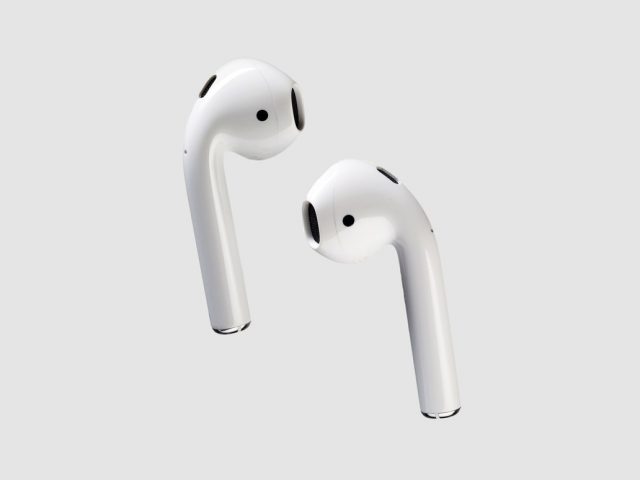
APPLE’S SLEEK AIRPODS represent the company’s vision of a hands-free, wireless future. Sure, the sound is only fair to middling, but Apple made them ridiculously convenient. And they’re here to stay, because Apple eliminated the headphone jack on the iPhone 7.
There’s just one problem: Apple AirPods are all but impossible to recycle, which makes them a Herculean environmental challenge.
My company iFixit was among the first to get a pair. We tear stuff down, so instead of cueing up U2, we took them apart. Easier said than done, because Apple glues AirPods together. We tried heating them. Prying them. Even cutting them, which bloodied one of our engineers. (Sorry, Scott). As I write this, an engineer is using a Dremel to dismantle the AirPod charging case. If he hits a battery, I’ll know it from the boom.
At this point, I am confident in saying there is no practical way of opening a pair of AirPods.
As a consumer, you probably don’t care. When your AirPods die, they’ll almost certainly have become cheap enough to replace. But you should care, because these things run on lithium-ion batteries—one in each pod, and a larger one in the case. If you’ve ever owned anything with a rechargeable battery, you know most lithium-ion batteries have a usuable lifespan of just a few years. Eventually, your AirPods will stop working.
Then what?
Like everything else Apple sells, AirPod packaging features the “do not landfill” icon of a crossed-out trash bin. Apple wants you to recycle your AirPods, but doesn’t say how.
Recycling electronics is remarkably complex. Recyclers must dismantle gadgets and manually remove the batteries before sending the devices to a shredder, which mechanically separates the materials that can be melted down, recycled, or reused. Samsung’s Note7 debacle made abundantly clear the risks of compromising or mishandling a lithium-ion battery. Now imagine one inadvertently loaded into a shredder full of flammable dust and e-kindling. Kablooey.
Apple is hardly alone in making its products difficult to break down. “Manufacturers design electronics to be fast, and easy to use, and really thin,” says John Shegerian, CEO of ERI, one of the biggest e-waste recyclers in the US. “They aren’t designed to be easy to recycle. Gluing products together, hiding the batteries away—that all makes recycling more difficult, less profitable, and more dangerous. Three things you don’t want recycling to be.”
When manufacturers make batteries impossible to remove, they also make those product impossible to safely and profitably recycle. In other words, they disincentivize recycling. Apple provides no guidance to recyclers dealing with the millions of gadgets consumers discard each year, leaving them to figure out how to open sealed cases, locate batteries, and break everything down without blowing anything up.
To be fair, Apple does offer a take-back program and built a robot to break down certain iPhones. The company says it will replace AirPod batteries for a fee, but I doubt you’ll see Apple Geniuses doing that. They’ll probably hand you a new pair of AirPods. And even though Liam, Apple’s vaunted recycling robot, can disassemble an iPhone every 11 seconds, but it isn’t being used in any production recycling centers. Even if it were, Apple almost certainly would need a different Liam for AirPods.
Still, Apple could dedicate a robot to the task and it wouldn’t solve the problem, because the odds are most AirPods won’t end up back at Apple. Any that aren’t tossed into a drawer and forgotten will be thrown into the trash or dropped into a sorting bin at one of thousands of e-recyclers around the world.
Apple has sold more than 1.4 billion pairs of earbuds over the years, making those little white pods one of the most iconic, and ubiquitous, products ever. That’s one set for every five people worldwide. And they’re relatively easy to recycle, because Apple used materials that are easily shredded and separated by machines. Recycling only works when manufacturers make it easy. By stepping further away from that idea, Apple sets a dangerous precedent because as goes Apple, so goes the industry. Battery-integrated wireless earbuds may well become an industry standard. That troubles recyclers. It should trouble you.
The irony is companies like Apple can create—and have created—easily recycled products. Apple knows how to do this, as do companies like Samsung, but emphasizes design over practicality. If manufacturers want to continue placing design ahead of sustainability, they must at least publish comprehensive recycling procedures to ensure e-waste handlers can safely and efficiently deal with the refuse.
Until then, AirPods will remain a real pain for recyclers. And my engineers.








